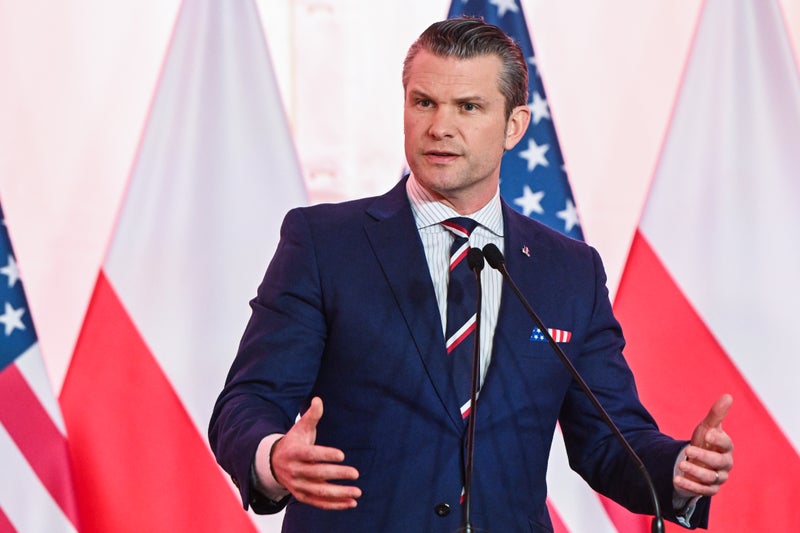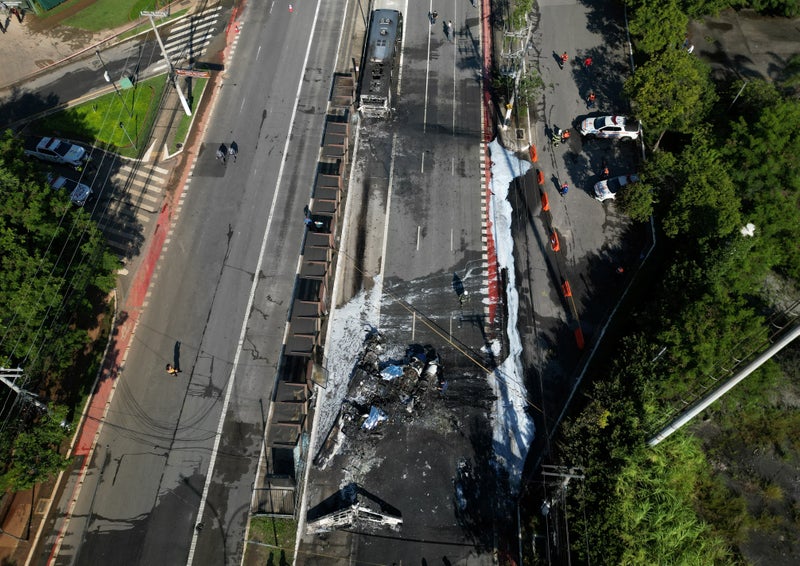With President Donald Trump entering office for the second time, NATO spending is once again under scrutiny as the United States warns European countries must dig deeper into their pockets. Defence secretary Pete Hegseth said on Wednesday the US would “no longer tolerate an imbalanced relationship” with allies on Ukraine, and warned that other NATO Members needed to spend more on defence. It comes as Mr Trump announced he had a “highly productive” phone call with Russian President Vladimir Putin, which he said would initiate negotiations to end the war in Ukraine.
![[NATO defence spending as % of GDP 2024]](https://static.independent.co.uk/2025/02/14/16/42/Screenshot-2025-02-14-at-16-52-59.png)
“Let’s not forget, Russia remains a threat well beyond Ukraine,” added Mr Healey. The United States is tied with Germany as the biggest net contributor to the NATO common budget - yet the cost is a drop in the ocean in terms of domestic product (GDP), compared to other countries. The North Atlantic Treaty Organization (NATO) budget for 2025 is approximately £3.8 billion (EUR 4.6 billion), but is paid for at different rates by each of the 32 member states.
The most recent member of NATO is Sweden, which joined in 2024. Ukraine is not a member of NATO, but has repeatedly sought membership since Crimea was annexed by Russia in 2014. The NATO budget is divided into three main parts: the civil budget, military budget, and NATO Security Investment Program. When looking specifically at the NATO common budget, to which countries make direct contributions, Germany and the United States are both the highest payers overall.
For the estimated £3.8 billion in 2025, this will amount to around £603.4 million contributed to the NATO budget by the United States. The United Kingdom is the third biggest contributor, at 11 per cent, amounting to approximately £416.6 million this year; followed by France (10.2 per cent) and then Italy (8.5 per cent). Albania, Macedonia, Iceland and Montenegro all contribute less than 0.1 per cent of the common NATO budget. All four countries have a GDP worth less than 0.1 per cent of the United States.
Separately, since 2006 all NATO members agreed to commit at least 2 per cent of GDP to defence spending in their respective countries. Since the United States has the biggest GDP and the largest net spending on defence by far, it does make up approximately two thirds of the NATO alliance’s combined defence spending. Yet for other countries to match even a proportion of this real-terms defence spending would be much more of a strain on their economies. In addition, the United States’ hefty military budget is not decided solely for NATO reasons, but also for its own military commitments and interests.
While the majority (72 per cent) of NATO Allies were predicted to meet their 2 per cent defence spending pledge last year, it is true that some (eight) countries have spent less than 2 per cent of their GDP on their military budget. These are Spain, Slovenia, Luxembourg, Belgium, Canada, Italy, Portugal, and Croatia. However, these countries (except for Croatia) have increased their military spending from the previous year.
In addition, the United States is not the highest spender on defence in terms of GDP; Poland (4.12 per cent) and Estonia (3.43 per cent) are both ahead, and face more risk from being close to Russia’s borders. In fact, every single NATO member has increased their defence spending in terms of GDP between 2014 and 2024; except for the United States, whose military budget was slightly smaller, according to NATO estimates.
Now, Trump is calling for NATO countries to increase defence spending to meet 5 per cent of GDP; a figure that even the US itself does not reach. More than doubling the GDP spending commitment would mean a huge jump in real-terms military spending for NATO countries. For Norway, which will spend approximately 2.15 per cent of GDP on defence in 2025, reaching 5 per cent of GDP would take defence spending from around £7.4 billion to over £17 billion.
For the United Kingdom, which spent around 2.3 per cent of GDP on defence in 2024, would have to increase its budget from around £56.9 billion to over £123 billion to meet Trump’s 5 per cent goals. Last year, the United States military made up around 38 per cent of the 3.4 million combined troops from NATO allied countries. At approximately 1.3 million military personnel in 2024, the United States military stands far higher than any other NATO country; yet this is no surprise, since it is also far larger by population.
The second largest army in NATO lies in Turkey, which has a mandatory military service for men, at 355,000 troops. Next are Poland (202,000), France (200,000), and the United Kingdom (185,000), according to the latest IISS Military Balance figures for 2024. The United States military is also reliant on a good relationship with NATO and its allies. There are around 65,500 US military personnel stationed across NATO countries, according to US Defense Manpower Data Center figures from June 2024.































